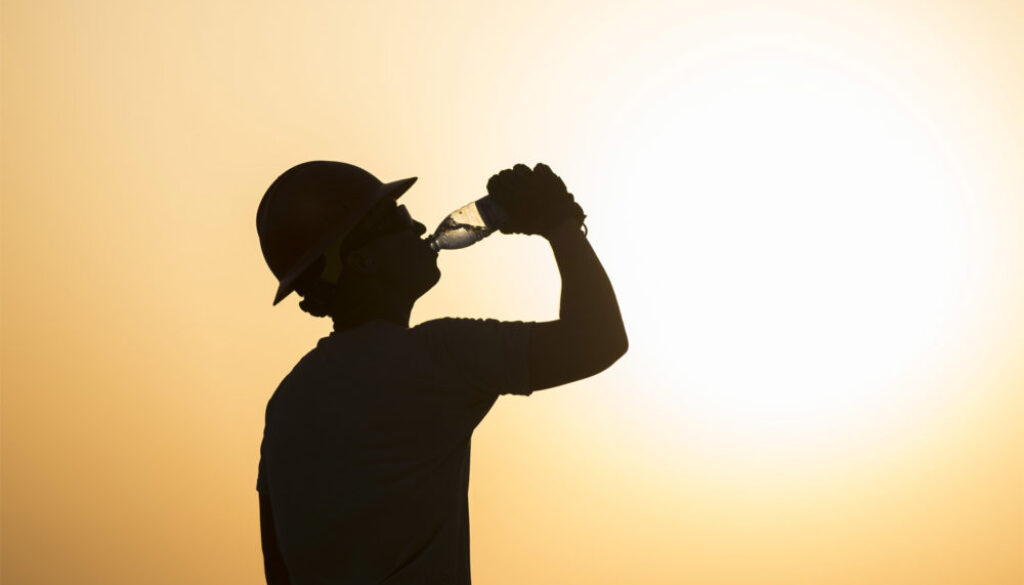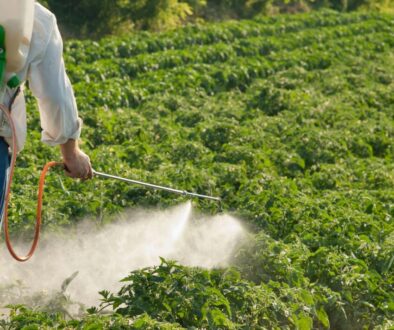US workers face scorching heat, but few protections
By Luyi Cheng
During a scorching June heatwave last year, a worker in Oregon collapsed after climbing down from conducting a roof inspection. Hospitalized with heat stress, he died a few days later. In Washington state, a farmworker was found slumped against a tractor after his shift, dead from a combination of factors that included heat stress, according to a medical examiner.
Now, this summer is again turning potentially deadly for people around the United States as climate change brings dangerously high temperatures. Just this week, blistering temperatures over 100 degrees Fahrenheit were recorded from Boise, Idaho to Tulsa, Oklahoma and millions of people living in the nation’s mid-section and southwest were under heat advisories, according to the National Weather Service.
Heat-related illness and death are known to disproportionally impact people of color and other disadvantaged populations, but the effects of triple-digit temperatures are particularly threatening to laborers whose jobs require long hours in sizzling heat.
Physical activity in hot environments can trigger heat exhaustion and heat stroke, both of which can kill. Government research has also shown that incidences of fatal heart attacks increase with temperature. Additionally, the Environmental Protection Agency (EPA) notes that temperatures need not be extreme to be harmful to someone with pre-existing medical conditions, which can greatly increase an individual’s vulnerability to heat.
Pushes for regulation
With climate change pushing summer temperatures ever higher, some states have moved to put rules in place to protect workers. But federal regulations are still largely lacking. And with no nationwide rules in place, that means most US employers are under no obligation to provide breaks, shade, or water for their workers during extremely hot weather.
For more than a decade, public health organizations have petitioned the US Department of Labor’s Occupational Safety and Health Administration (OSHA) to implement heat standards for working conditions.
Last year, OSHA responded by announcing plans to develop heat-related workplace rules. But experts predict that process will take six to eight years.
“It’s too long to wait,” said Juley Fulcher, a worker health and safety expert with the consumer advocacy group Public Citizen. “We need the protection now. Climate change is making every summer hotter, and workers are in danger.”
A recent report authored by Fulcher for Public Citizen calls on OSHA to issue an “Emergency Temporary Standard” to protect workers as rules are developed.
The report calls for policies that would include a temperature threshold to trigger preventative measures against heat stress. Other requirements include reduced workloads during extreme temperatures, mandatory rest breaks in cool locations, accessible hydration, and a plan to acclimatize workers new to working in high heat environments. These practices could prevent more than 50,000 heat-related incidents a year, the report predicts.
OSHA has not yet formally responded to Public Citizen’s request for an emergency temporary standard and are still moving forward with the normal rulemaking process, according to Andrew Levinson, OSHA’s Deputy Director of Standards and Guidance.
OSHA is analyzing the public comments received in response to the advance notice of the planned rulemaking, he said.
“While the rulemaking takes a very long time, the agency recognizes that workers are facing heat hazards today, all across the country,” Levinson said.
Range of risky jobs
Among the most vulnerable to heat-related health problems are the more than one million people in the United States who work in agriculture, according to researchers from the University of Washington and Stanford University. Climate change will further increase this vulnerability, and work adaptations thus far are insufficient to address this growing risk, according to a results published in 2020 by the researchers.
“Safeguarding the health and well-being of U.S. crop workers will therefore require systemic change beyond the worker and workplace level,” the researchers stated in their paper.
Construction workers also face the risk of heat-related injuries, as do grocery store workers who are stocking and delivering curbside orders, pool attendants, and food servers working outdoors on hot days, according to Nancy Brune, senior fellow at the Guinn Center for Policy Priorities.
“There are a whole host of workers exposed to extreme heat,” Brune said. The conditions could be especially dangerous for individuals who aren’t experienced with working in hot weather or expecting a need for an adjustment period, according to Brune.
Although some states, including California and Washington, have set heat standard regulations, rules vary with regard to such issues as temperature thresholds, indoor work versus outdoor work, and certain employer requirements.
After the deaths of four farmers in 2015, the California Division of Occupational Safety and Health installed a requirement that employers must provide training, water, and shade to prevent heat illnesses.
And Oregon officials responded to last year’s brutal heatwave by implementing requirements for access to shade, cool water and a rest break schedule on days in which the heat index reaches at least 90 degrees Fahrenheit.
“It’s a very widespread problem that needs an overarching solution,” Fulcher said.





July 16, 2022 @ 2:42 pm
I call BS..there is no climate warming!